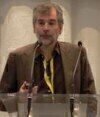Short duration, high precision methane flux measurements; Implications for annual CH4 emission reporting and CH4 mitigation strategies
Currently, methane emissions are generally estimated via theoretical calculations based on e.g., the IPCC guidebook rules. The assumption is that individual sources may vary widely but that the aggregated national total will be (more) robust. Some countries have developed regulatory frameworks to quantify the emissions, however no widely-approved methodology has emerged and mitigation projects remain rather limited due to lack of regulatory requirement and necessary capital investment. Private investment schemes, e.g. through climate finance, will require greater confidence that proposed targets / GHG reduction commitments will be achieved. Monitoring fluxes year round would address this problem but is generally too expensive, especially if part of the fluxes are of a diffuse nature due to leakages over a large aerial extent. Clearly the cost of the monitoring will have to be proportional to the amount of GHG being reduced and should not have a strong impact on the implied carbon-price of the mitigation measures. In this paper we use state-of-the-art mobile CH4 measurements, including tracer release and inverse modelling, on several landfills in the Netherlands and France to address the optimization and uncertainty issue of extrapolating measurements during 1-3 hours to annual estimates. We compare the calculated fluxes with emission reporting by the landfill management to the European Pollutant Release and Transfer Register (E-PRTR) and discuss indications and causes of over/underreporting. The results show that there may be a substantial discrepancy between "guidebook" calculated emissions and real world emissions. While we mostly see an overreporting, this is not always the case and there seems to be no "quick fix" by applying a correction factor. At the same time the measurement campaigns only provide a snapshot and may not be representative for the annual flux. This question is addressed by comparing measurements during various times in the year and explore relationships with climate variables and seasons to optimize the time window in which campaigns may be most representative. A related question is if the optimal strategy would be one expensive, but highly accurate, measurement campaign or multiple (2-4), less accurate but less costly, measurements throughout the year. While our case study focuses on landfills, the extrapolation from short term flux measurements to validate annual reported emissions is relevant for many source sectors. This is a key issue for setting realistic targets, connecting country GHG reduction plans, climate finance, private investors and GHG emitting companies. Mitigation measures will, in the end, be applied to individual sources - if the GHG emissions are under/over reported we will under/overestimate the need and corresponding benefit of associated GHG mitigation strategies.
Free to watch
Sessions are free to watch. Please login to view this session or create an account.
Speakers

Hugo Denier Van Der Gon (TNO)
Digital Edition
PIN 25.3 June/July
June 2024
Analytical Instrumentation - Recent Advances In Various Bench Scale Accelerated Oxidative Testing Methods For Fuels - Petrochemical Industry: Anton Paar Solutions Streamline Processes, Reduce H...
View all digital editions
Events
Jul 30 2024 Jakarta, Indonesia
Jul 30 2024 Jakarta, Indonesia
China Energy Summit & Exhibition
Jul 31 2024 Beijing, China
Jul 31 2024 Chengdu, China
Aug 05 2024 Moon Township, PA, USA














